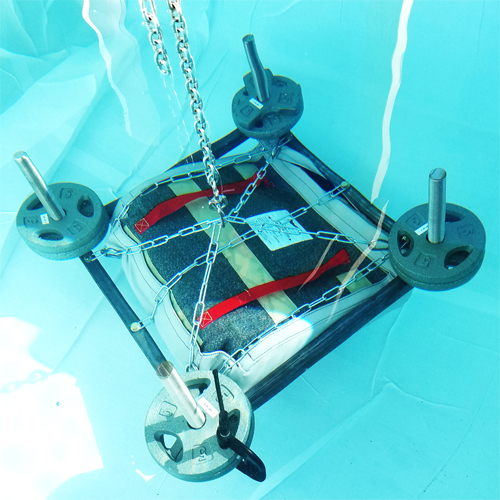Buoyancy and Flotation Testing
Buoyancy and Flotation Testing (for aviation)
The Buoyancy or Flotation Test is used to determine the net buoyancy of individual flotation devices used by aircraft occupants, such as life preservers and flotation seat cushions. This test is prescribed by the performance requirements of Technical Standard Orders TSO-C13 and TSO-C72.
Test Methods

Test Summary
The flotation device is submerged for 8 hours in fresh water, after which the buoyancy force is determined. Under TSO C-13, the buoyancy force must be at least 35 lbs. for adult life preservers, 25 lbs. for child life preservers, and 20 lbs. for infant life preservers. Under TSO C-72, the minimum buoyancy force for individual flotation devices must be at least 14 lbs.
Test Sample Requirements
Test samples must meet the following requirements:
Regulatory Requirements
This test is typically used to show compliance with the following U.S. Federal Regulations:
Note: Compliance to these regulations is shown through TSO authorization under TSO-C13 or TSO-C72.
Products Requiring This Test
The FAA requires all extended overwater flights carry life preservers or other approved flotation devices. Extended overwater flights are those conducted over water at a distance of 50+ nautical miles from the nearest shoreline. These items typically include:
History of the Buoyancy and Flotation Test
In 1959, the Federal Aviation Administration (FAA) issued Technical Standard Order TSO-C13 to establish minimum performance standards for life preservers. In 1963, TSO-C72 was also issued to establish minimum performance standards for other types of individual flotation devices. These standards have been revised multiple times over the years. As of 2020, the most recent revisions are TSO-C13g and TSO-C72c.
Additional Resources
| Resource | Description |
|---|---|
| TSO-C13g |
Life Preservers This technical standard order (TSO) prescribes the minimum performance standards that life preservers must meet in order to be identified with the applicable TSO marking. |
| TSO-C72c |
Individual Flotation Devices This technical standard order (TSO) prescribes the minimum performance standards that individual flotation devices must meet in order to be identified with the applicable TSO marking. |
| SAE 1354 |
Individual Inflatable Life Preserver This SAE Aerospace Standard (AS) provides the minimum design and performance requirements for individual, inflatable life preservers, divided into six categories: “Adult,” “Adult-Child,” “Child,” “Infant-Small Child,” “Adult-Child-Infant-Small Child,” and “Demonstration.” |
Ask the Experts

Stuck? Our experts will help you determine the best solution for your needs.
Contact Us